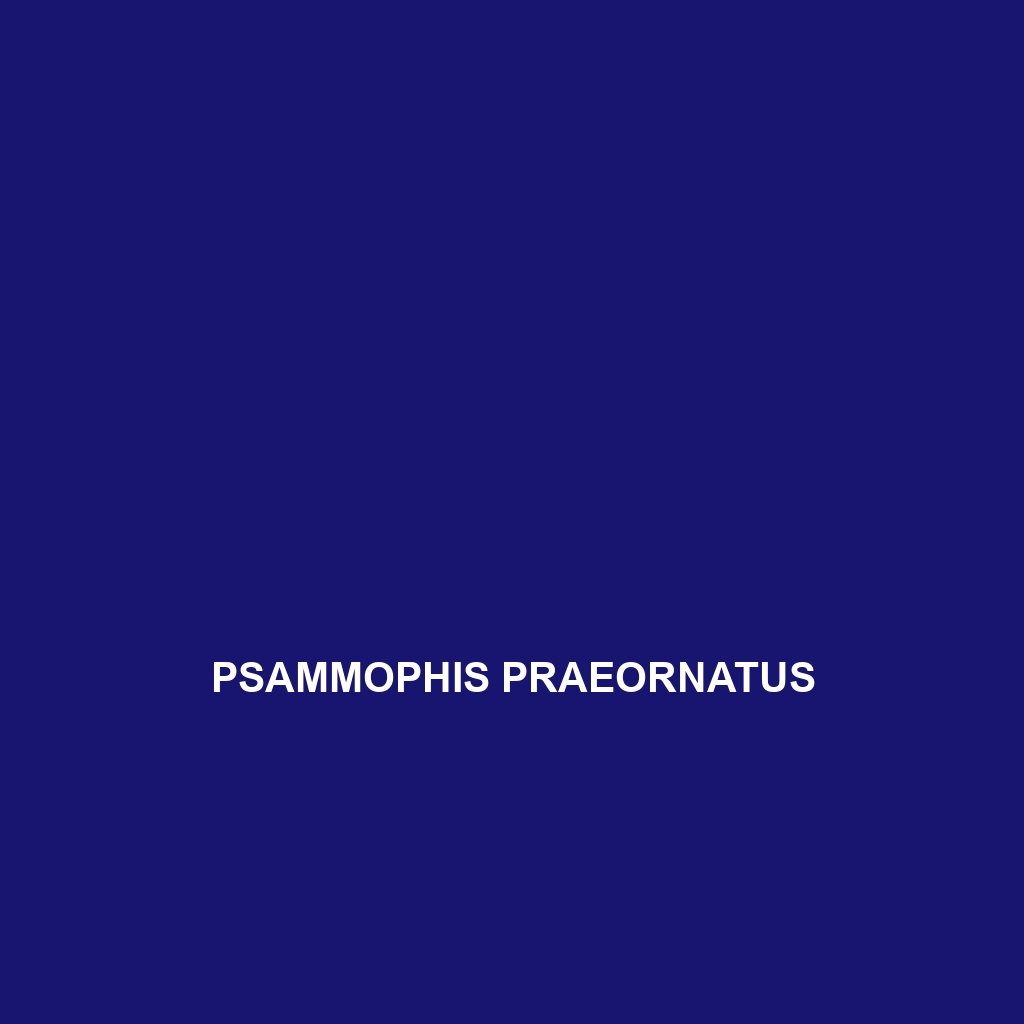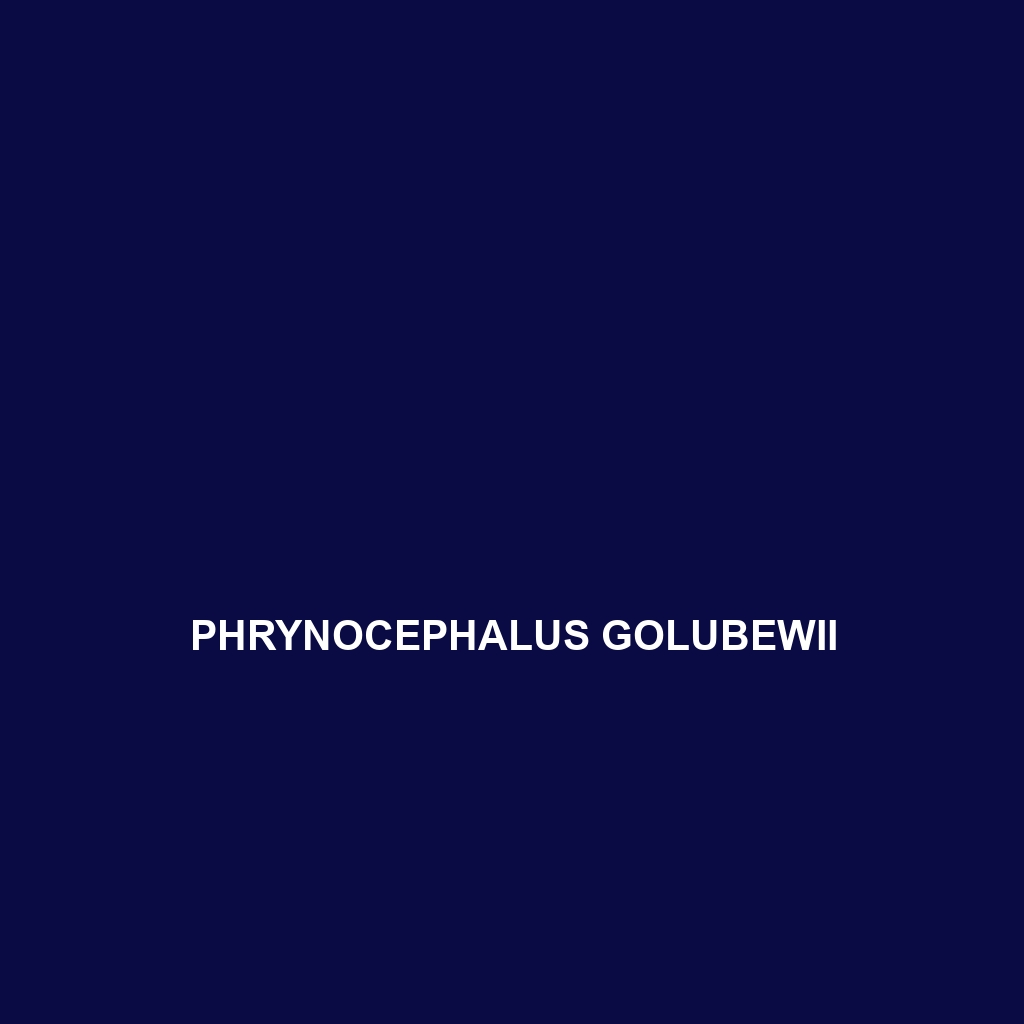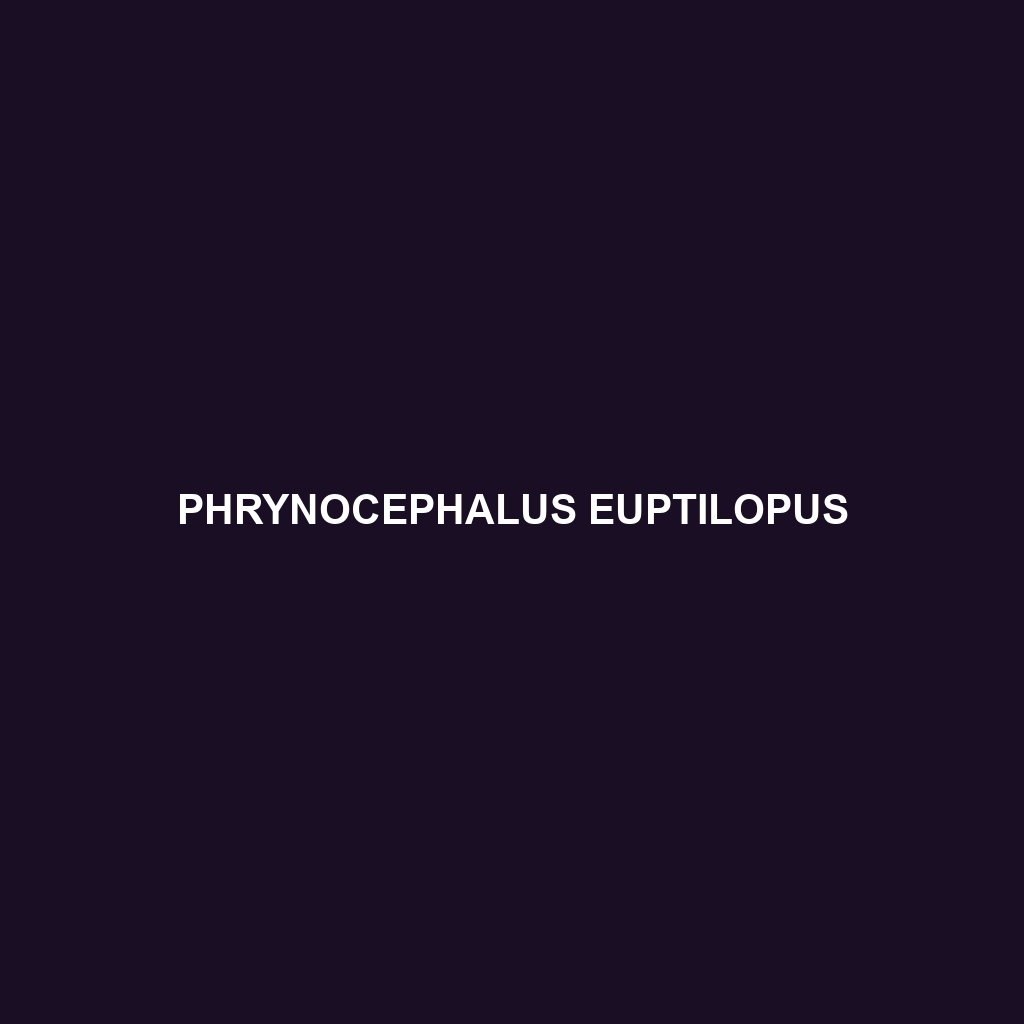<strong>Psammophis phillipsii</strong>, commonly known as Phillips' sand snake, is a slender, 1.2 to 1.5-meter-long reptile found in Africa's arid habitats, characterized by its distinctive brown and yellow coloration with dark crossbands. This carnivorous snake demonstrates impressive speed and agility, predominantly feeding on small mammals and lizards while playing a crucial role in maintaining ecological balance.
Tag: sandy habitat species
Psammophis phillipsii
<strong>Psammophis phillipsii</strong>, commonly known as Phillips' sand snake, is a slender, 1.2 to 1.5-meter-long reptile found in Africa's arid habitats, characterized by its distinctive brown and yellow coloration with dark crossbands. This carnivorous snake demonstrates impressive speed and agility, predominantly feeding on small mammals and lizards while playing a crucial role in maintaining ecological balance.
Phrynocephalus golubewii
Introducing the Phrynocephalus golubewii, or Golubew's toad-headed agama, a captivating lizard native to the arid regions of Central Asia, known for its distinctive sandy beige to light brown coloration and remarkable adaptations for survival in harsh desert environments. This insectivorous species showcases a fascinating blend of unique physical traits and behaviors, making it a vital part of its ecosystem.
Phrynocephalus euptilopus
<p>The <b>Toad-headed Agama (<i>Phrynocephalus euptilopus</i>)</b> is a unique lizard native to the arid regions of Central Asia, exhibiting a flattened body, broad head, and excellent camouflage that allows it to thrive in harsh environments. Known for its diurnal behavior and diet primarily consisting of insects, this resilient species plays a vital role in maintaining the ecological balance of its desert habitat.</p>
Pedioplanis burchelli
<p><b>Pedioplanis burchelli</b>, known as Burchell's sand lizard, is a medium-sized, strikingly colored insectivore native to the savannas and grasslands of southern Africa, including Namibia and Botswana. This agile lizard exhibits remarkable camouflage and thermoregulatory behavior, playing a vital role in its ecosystem as both predator and prey.</p>
Pachydactylus maculatus
Discover the Pachydactylus maculatus, or spotted thick-toed gecko, a medium-sized insectivore native to southern Africa's dry savannas and shrublands. With its unique dark-spotted coloration and specialized thick toes, this nocturnal gecko adeptly navigates its environment while playing a vital role in controlling insect populations and contributing to ecological balance.
Eremias andersoni
Eremias andersoni, commonly known as Anderson's racerunner, is a swift, insectivorous lizard found in the arid terrains of Central Asia, with adults reaching up to 30 centimeters in length. Known for its distinctive sandy coloration and impressive speed of up to 28 kilometers per hour, this species plays a vital role in controlling insect populations within its ecosystem.
Ctenotus striaticeps
Experience the captivating striped ctenotus (Ctenotus striaticeps), a slender lizard native to Australia's arid regions, showcasing distinct darker stripes and agile movements. This intriguing insectivore plays a vital role in controlling insect populations while exhibiting unique behaviors, making it a fascinating study in its ecosystem.
Chondrodactylus bibronii
Discover the Chondrodactylus bibronii, also known as Bibron's Gekko, a robust nocturnal reptile from southern Africa that thrives in dry habitats like savannas and rocky terrains. With its distinctive tan to light brown coloration and agile burrowing abilities, this gecko plays a crucial role in controlling insect populations while serving as prey for larger predators.
Anniella geronimensis
Discover the unique Anniella geronimensis, also known as the California legless lizard, a fossorial species thriving in Southern California’s sandy habitats. With its smooth, cylindrical body averaging 30 to 40 centimeters and a diet consisting of small invertebrates, it plays a crucial role in pest control and ecosystem health.









